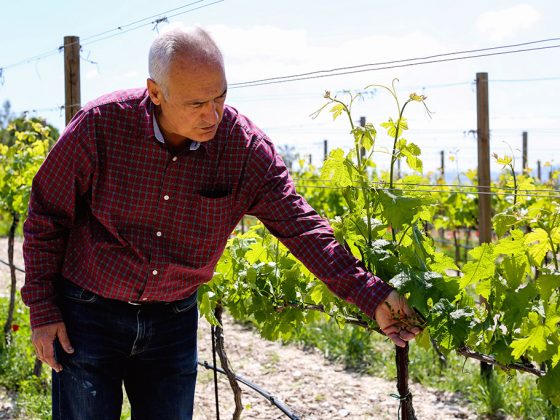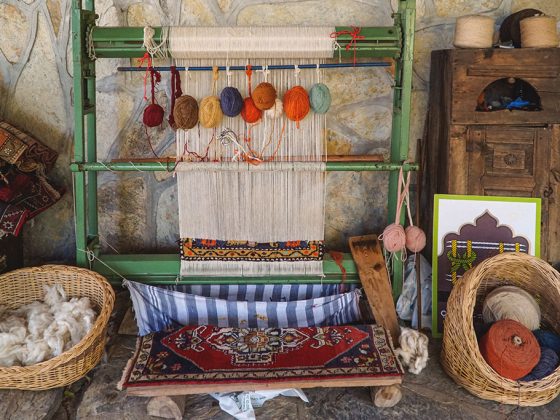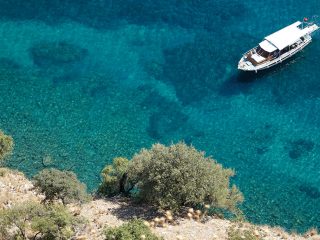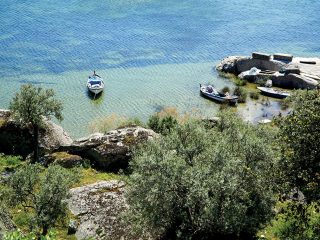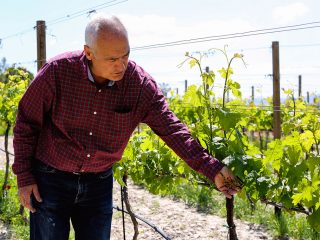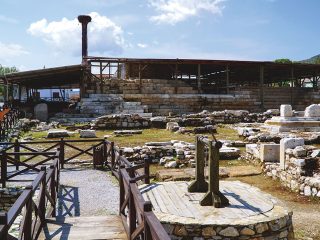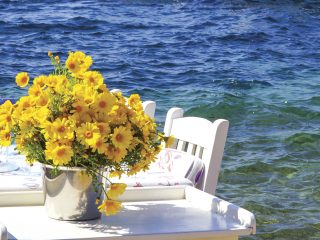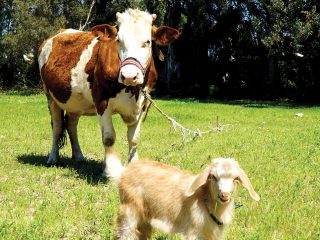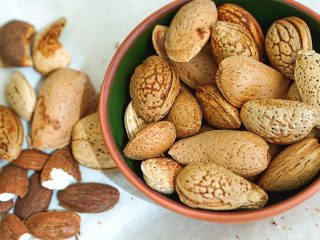Beat the crowds and visit a town that will attract a lot of attention in the coming years. Just a short distance inland from the Milas-Bodrum Airport, Milas is a town with a rich historical center and a new archaeological park at its heart.
By Chris Drum Berkaya
Photos by Merve Göral
With the recent opening of the Uzunyuva Arkeopark, formed around the podium and monumental tomb of King Hecatomnus, which was unearthed in 2010 in extraordinary circumstances, Milas can now justifiably claim the title of the city of civilizations. The site is now listed on the tentative list for UNESCO World Heritage status, with the citation noting “The Mausoleum and the sacred area of Hecatomnus is an outstanding example of the funerary architecture with regard to its design and artistic value during the ancient period.”
The centerpiece of the Milas’s cultural heritage is marked by a stork’s nest. It is a long-established, beloved nest on top of a tall Roman column, where a pair of storks are welcomed on their return every spring. Sadly, their home, a first century Roman Corinthian style column known for years as uzunyuva (tall nest), has in recent decades been a lonely anachronism above a fine Roman wall amongst old homes and the facades of grand 19th century mansions falling into ramshackle disrepair. The column stands on a slope and platform formed by another 20 meter high retaining wall of ancient stones located at the site of the old minibus station. The significance of the wall and the column intrigued archaeologists, but no official excavations were attempted on private property or within the town limits given that the area was under a heritage preservation order.
A seemingly well-planned and funded illegal excavation, discovered by police in 2010 near the base of the Meandros marble column, shocked authorities and the archaeological world with its brazen attempt to remove and transfer precious antiquities into private markets, the scourge of world heritage preservation. The would-be thieves drilled through two meters of solid marble and stone to a two roomed grave chamber, revealing an extraordinary frescoed tomb and marble sarcophagus of the ancient era. Thankfully, the noise alerted police and arrests were made. The attempt galvanized authorities into declaring the area an excavation zone and embarking on a long project to create an archaeological park around the discoveries.
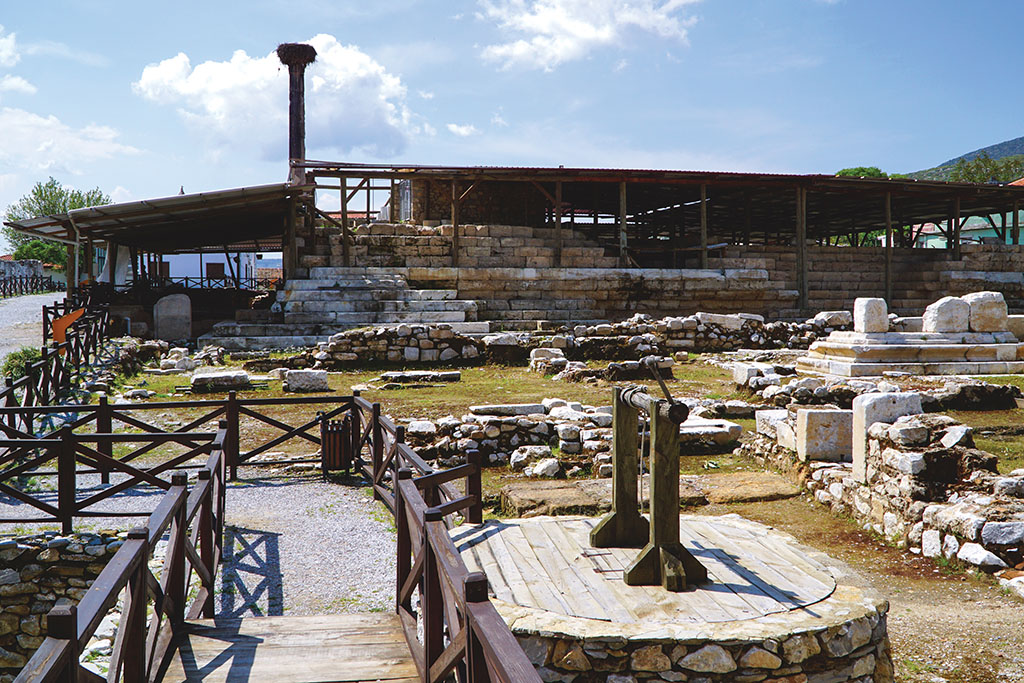
The Arkeopark is named after Hecatomnus of Mylasa, the Persian satrap and self-made king who ruled over the Carian region of southwest Turkey, present day Milas, from 392–377 BC, building it into a substantial city linked to the port city of Iasos. Until the startling discovery of his tomb, very little had been known about this ancient king aside from being Mausolus’s father. When Hecatomnus died, Mausolus moved the capital of the kingdom from Mylasa to Halicarnassus, present day Bodrum, and embarked on a huge building program for his palace, walling the city and other strongholds, and ultimately beginning construction on his own monumental tomb. After his death, Mausolus’s wife Artemisia completed the 50 meter high building over the tomb, extravagantly embellished by sculptors brought from Athens and the Hellenic world. The Mausoleum of Halicarnassus became known as one of the Seven Wonders of the Ancient World. As any visitor to Bodrum knows, little remains to be seen of the Mausoleum at the site today, but much research has been devoted to modelling how it would have been constructed, as it seemed so unique a monument.
With the new discovery of the Hecatomnus tomb and podium in Milas this century, which establishes it as the prototype for the Mausoleum of Halicarnassus in engineering and construction, a vast amount of information has suddenly become available to archaeologists. One of the leaders of the scientific and conservation team, Professor Adnan Diler, believes that the monument is similar to the Mausoleum of Halicarnassus and the tombs in both capitals were planned by the same architect, Pythius of Priene. Uncovering the whole podium, however, had revealed that the tomb belonging to Hecatomnus was left half-finished. Prof. Diler stated that “the mausoleum was built on an ancient burial ground. Both were respected as a sanctuary then and for centuries afterwards, reflecting the belief traditions of Anatolia, as a holy gathering place.”
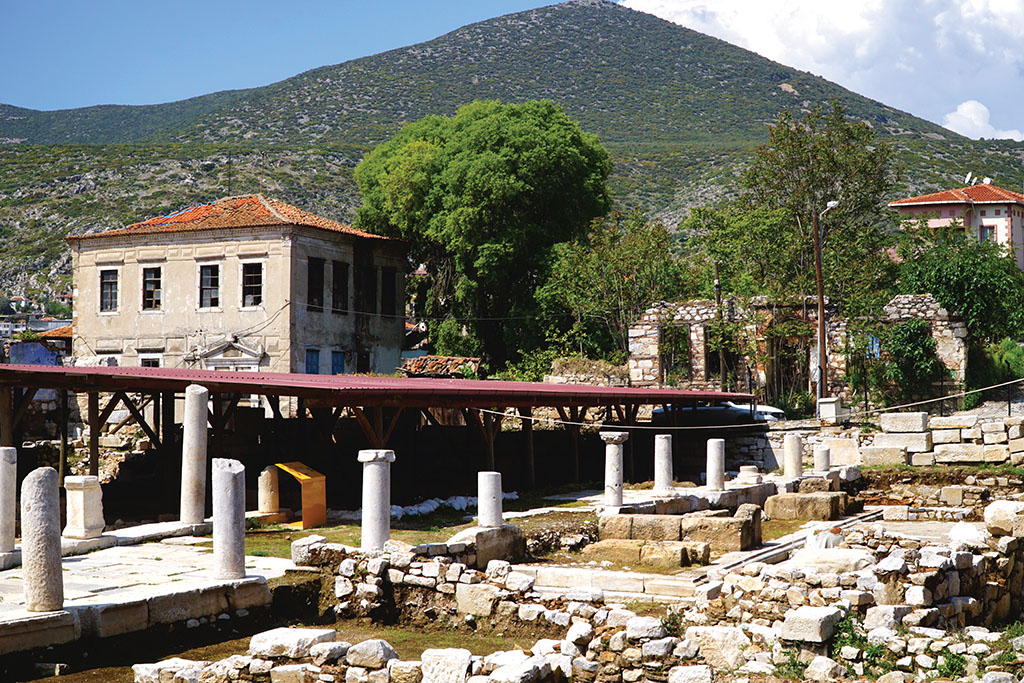
Most extraordinary of all is that, for the first time in 2,300 years, King Hecatomnus’s face has been revealed. It is a noble strong face found on the superb, finely sculpted marble sarcophagus placed deep in the tomb chamber. One panel of marble depicts scenes of the family mourning him and portraits of the family living, all captured in extraordinary detail. The other panels reveal the King hunting and dining, rendered in a mastery of movement and detail in marble and, according to archaeological analysis, all influenced by the Athens school of sculpture of the period. The walls in the tomb chambers were also finely decorated with painted murals depicting more scenes in the life of Hecatomnus. Since the murals have been damaged and are sensitive to humidity, the actual tomb chamber and sarcophagus are not open to visitors. However, of the seven extensively restored old Milas houses remaining on the site, one has been transformed into an information center about the tomb, King Hecatomnus, and his family dynasty. To give visitors the experience of the tomb, a full size replica of the sarcophagus has been made, with copies of the wall murals placed alongside it, all fully captioned in Turkish and English. Scientific examination continues on the tomb, and conservation continues with small finds, such as finely made gold, bronze, ivory pieces and jewelry gradually going on display as more items are discovered.
The entire Arkeopark holds several interesting areas to explore around the central podium, including the excavated and partly roofed entrance gateway, the propylon, and later Roman villa foundations, an altar, plus two very important restored 19th century Milas villas. The “Milas Mansion” at the gateway displays an Ottoman era family way of life, with the kitchen, storage, living rooms and bedrooms laid out with original furnishings and mannequins in period dress. The other villa holds the unique Milas Carpet Museum of traditional handwoven carpets unique to the region. A summer café and art exhibition garden complete the park area where visitors can explore and relax.
Tabakhane Caddesi, Milas;Tues-Sun, 8:30am – 6:45pm. Free entry.
A cultural walking tour of Milas
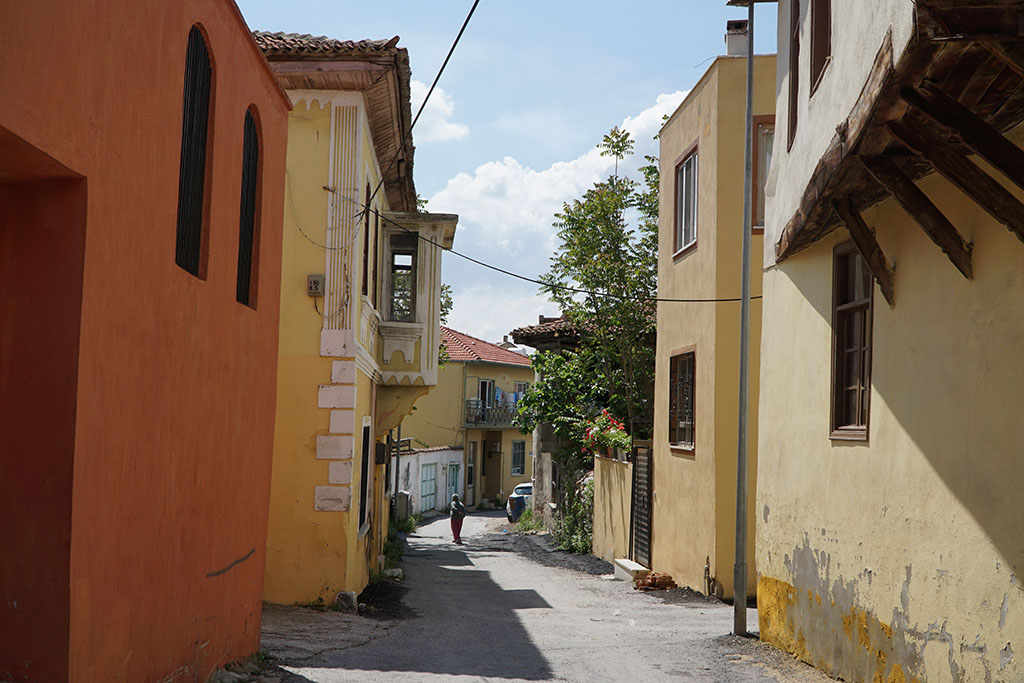
Start with the stones displaying the double-headed axe, emblem of Caria, the ancient kingdom from the fourth century BC, which stretched from Bafa Lake in the north, to Dalyan in the south, and deep into the interior towards Aydin. Massive, fine white marble blocks form the Roman built triumphal archway, named the Baltalı Kapı (Gate of the Axe) due to the axe carved in the top span. Built in the second century CE, it remains a complete arch, once the northern gateway of ancient Mylasa, built as part of a long aqueduct carrying water from the mountain to the town. It is still in use today as part of the street.
Walk towards the hill in the main center past the Ağa Moaque, built 1737, across a neat little Ottoman arched bridge, past a collection of Ottoman tombs and aim for the landmark tall marble column with sticks on top. This marks the site of the Uzunyuva Arkeopark, based around the tomb and podium, but also includes the Milas Mansion and the Milas Carpet Museum.
On the other side of the park lies the Hacı Ali Ağa Mansion, built in 1868, where traditional arts and crafts are often exhibited. The first floor is also named in honor of the famous cartoonist Turhan Selçuk, who was born in Milas on July 30, 1922 (died March 11, 2010). At the top of the slope one finds the restored Çollüoğlu Han in the same square as Belen Mosque. The Han was commissioned in 1719 by Hacı Abdülaziz Ağa, the son of Abdullah Efendi, and is named after Hacı Mehmet Çöllüoğlu, who owned the site. The Çöllüoğlu Han served as the religious, commercial, and administrative center of Milas district throughout most of its recent history.
Walk down the slope through the old Ottoman trade quarters, where skilled craftsmen still work and where the delicious aroma of Milas lamb kebabs and kofte greet locals and visitors alike at lunch time.
Don’t miss the Hacı Ilyas Mosque, possibly the oldest mosque in Western Anatolia, built in 1330 under the Menteşe overlords.
Continue onto the main boulevard past modern cafés to Ata Park, opposite the “Hungarian Houses,” built from 1920–1932 to house Hungarian guest workers. From there, bask in Milas’s blend of old and new by wandering through to the old center, where shops and cafes mix with older buildings.


